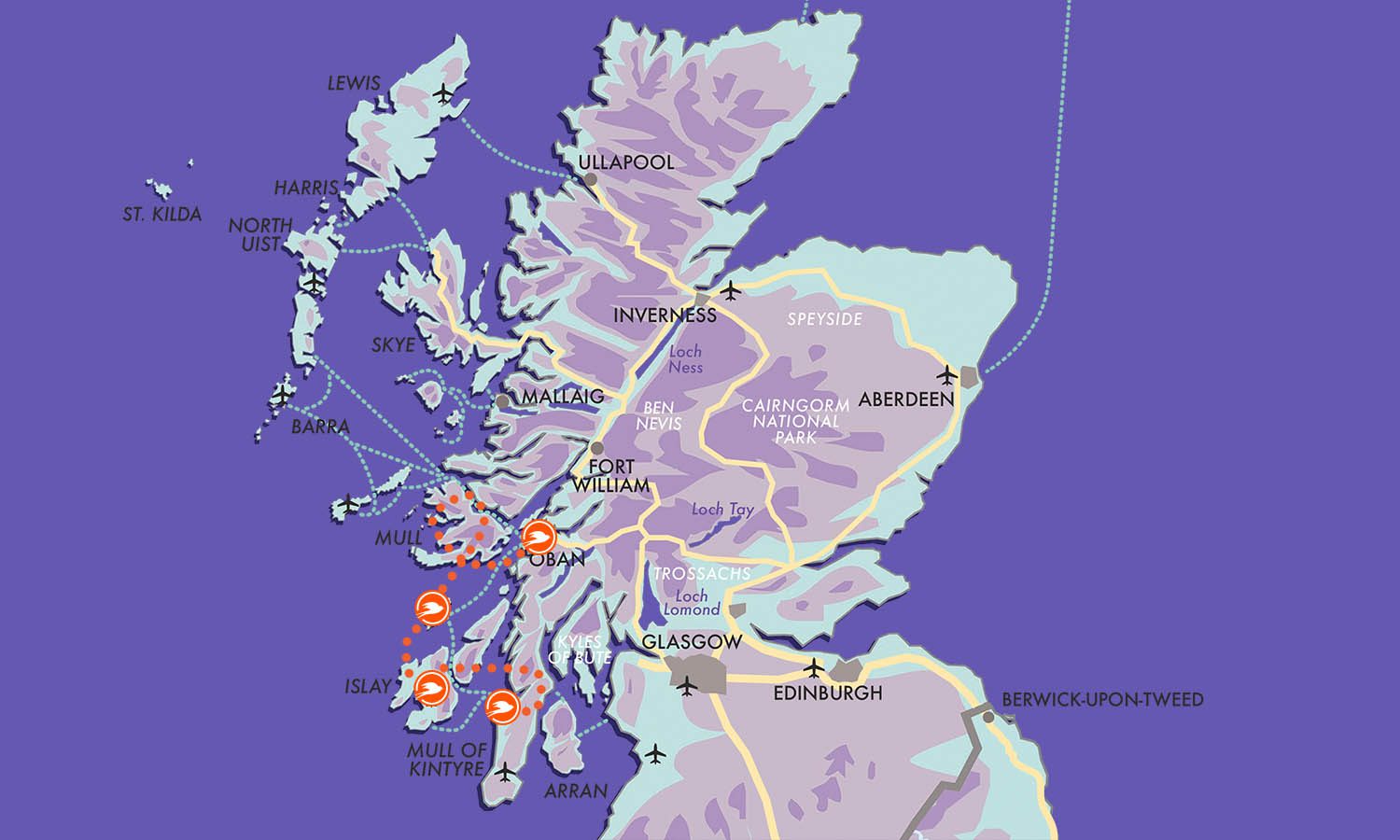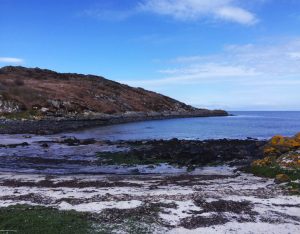Scottish Island Escape
Take the ferry to Gigha...
Holiday inspiration currently loading...
A relaxing island-hopping tour of hidden gems of the Southern Hebrides.
A week touring remote Scottish islands has to be good for the soul. The minute you set sail on that first ferry trip, the cares of the world simply slip away. This eight day holiday combines three islands of the Southern Hebrides – tiny Gigha, enthralling Islay and captivating Colonsay. We’ll include tips on the best secluded beaches, the ideal places to spot seals and our recommendations for which Scotch whisky is worth tasting!

This holiday includes the Scottish west coast islands of Gigha, Islay and Colonsay.
£975 per person for April & October, £1125 per person for May to September.
Prices are based on two people sharing a double or twin room for seven nights on a bed & breakfast basis and include ferry travel for car and passengers throughout. The order of the holiday may be reversed due to availability.
Before your departure, you will receive personalised holiday information including full directions, recommended routes, and suggestions on places to visit depending on your interests and our local knowledge to help you get the most from your holiday.
All itineraries and room types are presented subject to availability at specific hotels.
We work hard to make sure the unexpected doesn’t affect your trip. On rare occasions, changes or cancellations may occur, affecting accommodation, transport or excursions. We are committed to informing you of any such circumstances and will use our knowledge and resources to offer suitable alternatives wherever possible.
You are requesting availability for
This holiday can be arranged from late March to the end of October. You can start on a Friday to Gigha, or, in reverse order, on a Sunday afternoon to Colonsay.
Availability is individually checked for a hand-picked selection of smaller hotels, guest houses and other independent businesses, so please bear with us and we will respond in 1-2 working days.
Please note: All fields marked * are required
All our holiday prices include a service charge of £9 per person per night towards the costs we incur in researching, planning and designing your holiday.
We guarantee to refund this service charge if you believe that arranging your holiday through McKinlay Kidd has not met your expectations for value. All we ask is that you write to us within 7 days of your return and explain your reason for claiming the refund. This will ensure that we can improve the experience for all our future guests.

I recently set off from the bustling city centre of Glasgow on a gloriously sunny Saturday afternoon to enjoy a relaxing bank holiday weekend and expe...
Pleased that we left the organisation of ferries and hotels to you rather than tackling it ourselves.John & Anne, Aberdeen
We loved the variety of terrain on each island - rocky areas, mountains, beaches, woodland, heathland, streams…Michael & Alexandra, Devon, UK